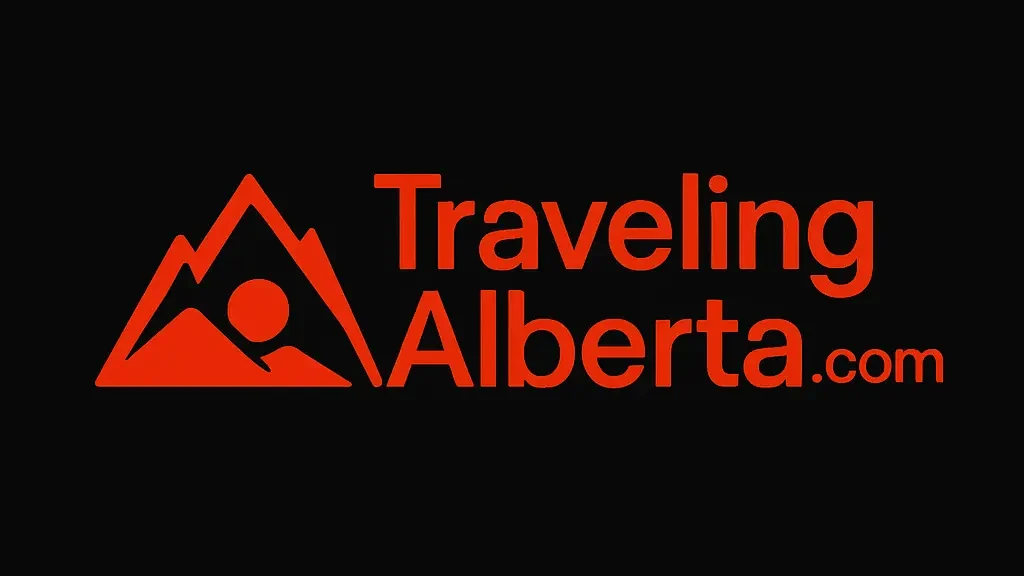The Wilcox Pass hike is one of the most breathtaking and rewarding alpine hikes in Jasper National Park, Alberta, Canada. Located along the world-renowned Icefields Parkway, this moderate hike delivers stunning panoramic views, encounters with wildlife like bighorn sheep, and a direct look at the Athabasca Glacier — all within a few hours of walking.
What sets Wilcox Pass apart from other trails is its incredible value for effort. In just a short ascent from the trailhead, hikers are greeted with sweeping vistas of the Columbia Icefield and surrounding mountains. The trail offers everything that adventure-seekers love about the Canadian Rockies: alpine meadows, crisp mountain air, and a sense of tranquility only found far above the treeline.
Whether you’re visiting Jasper for the first time or returning to discover new trails, Wilcox Pass is a must-see. This blog covers everything you need to know: how to get there, what to expect, the best time to hike, wildlife encounters, and expert tips for a safe and memorable journey.
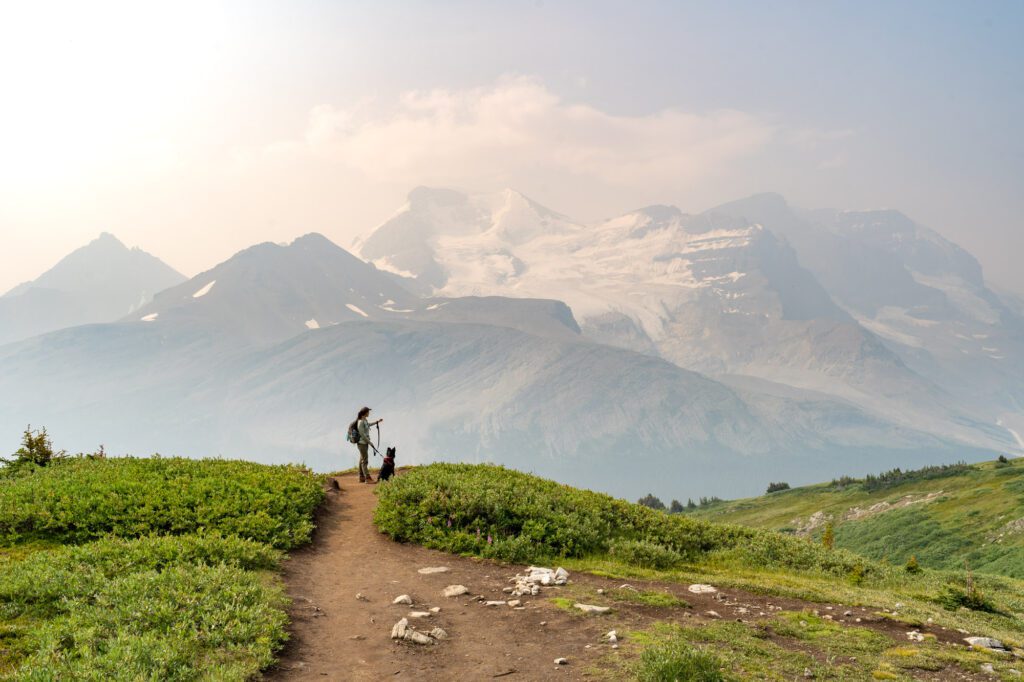
Trail Overview: What You Need to Know
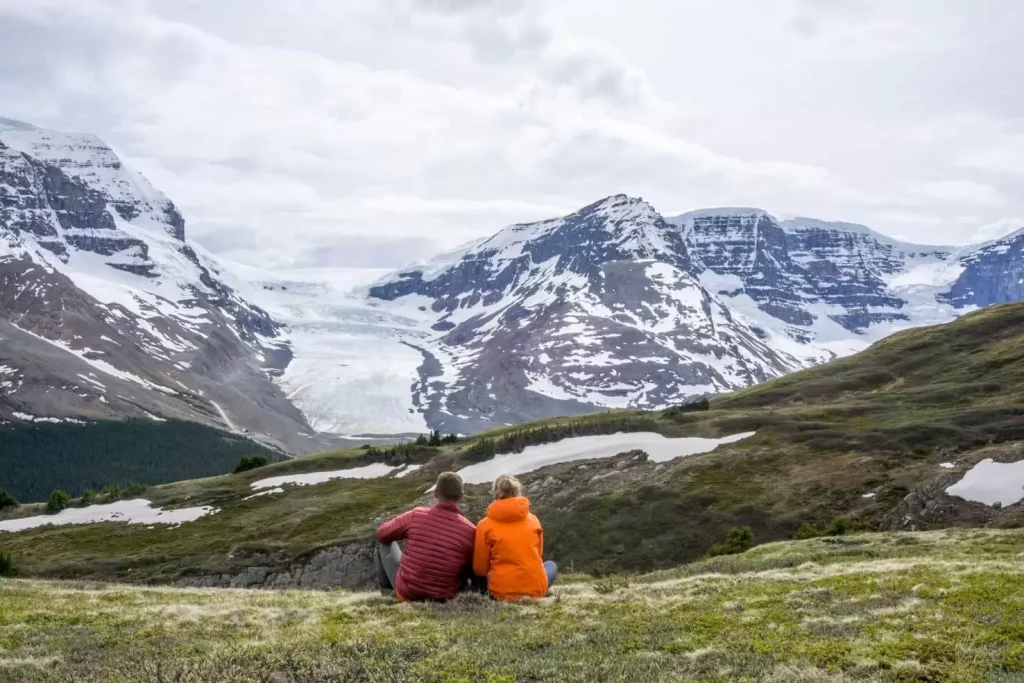
The Wilcox Pass hike starts just off the Icefields Parkway (Highway 93), at the Wilcox Creek Campground, approximately 3 km south of the Columbia Icefield Discovery Centre. It’s easy to reach by car, and the parking area includes signage and maps that make navigation simple.
- Distance: 8–9 km (round trip)
- Elevation Gain: 390 m (1,280 ft)
- Difficulty: Moderate
- Duration: 2.5 to 4 hours round trip
- Trail Type: Out-and-back
- Best Time to Hike: Late June to early October
The trail begins in a subalpine forest, winding its way up through moss-covered trees and lichen-covered rocks. Within the first kilometer, the path opens into expansive alpine meadows. This sudden shift is one of the trail’s highlights—it transitions quickly from shaded forest to dramatic mountain views, making it feel like you’ve entered another world.
You’ll soon encounter the iconic red Parks Canada chairs, offering the perfect place to rest and admire the Athabasca Glacier in the distance. From there, the trail meanders gently through the meadows, eventually reaching Wilcox Pass. While some hikers stop at the pass, more experienced adventurers can continue further for even more elevated views and solitude.
Because of the moderate distance and low technical difficulty, Wilcox Pass is suitable for a wide range of hikers—from families with older children to solo adventurers and photographers looking for jaw-dropping shots.
Scenic Views and Photography Highlights

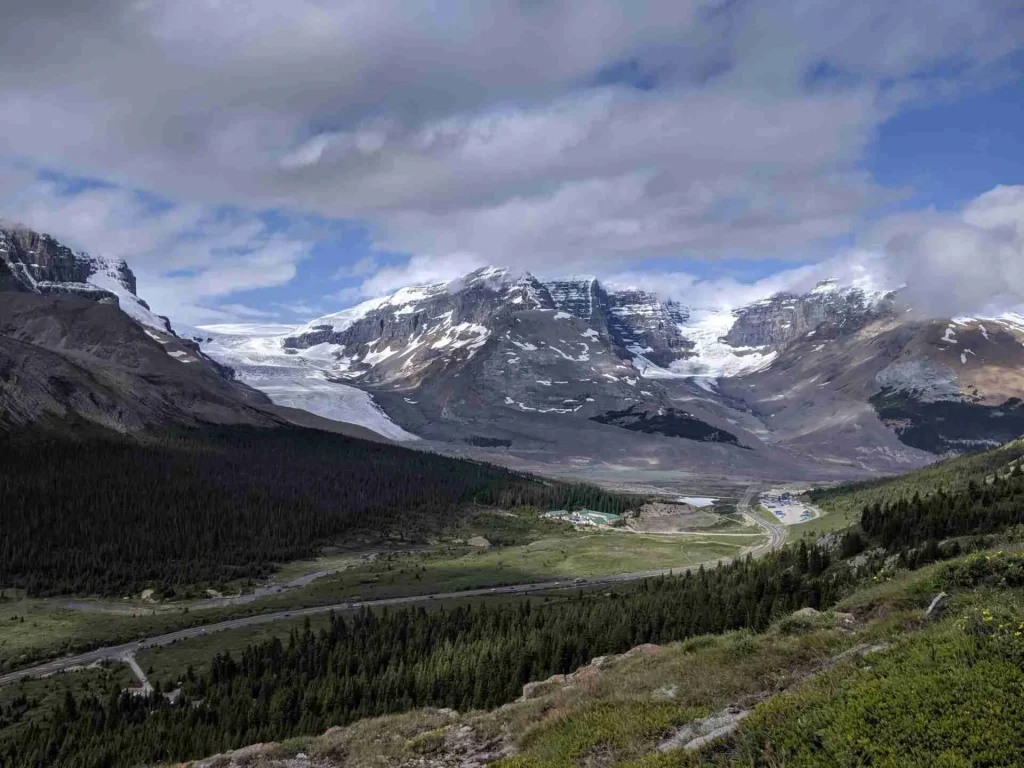
The Wilcox Pass trail is famous for its jaw-dropping alpine scenery. As you ascend, the trail reveals a series of dramatic viewpoints overlooking the Columbia Icefield, one of the largest accumulations of ice south of the Arctic Circle. The Athabasca Glacier, which spills off the icefield, is visible for most of the hike and offers an awe-inspiring backdrop for photos.
The further you hike into the meadows, the more expansive the views become. To the west, the jagged peaks of the Canadian Rockies tower above. On clear days, you’ll also spot Mount Athabasca, Mount Andromeda, and Snow Dome — a hydrological apex that feeds rivers flowing to the Pacific, Atlantic, and Arctic Oceans.
The real magic happens once you reach Wilcox Pass itself. The landscape here is open and vast, offering 360-degree views of untouched alpine terrain. The meadows roll out like a carpet, and you’ll often feel like you’re the only person in the world. For photographers, the lighting is best in the morning and late afternoon, when the glacier glows with soft, golden tones.
Whether you’re taking photos of the wildflowers in summer, golden grasses in fall, or wildlife roaming freely, Wilcox Pass delivers some of the best scenery in Jasper National Park.
Wildlife Encounters and Natural Beauty
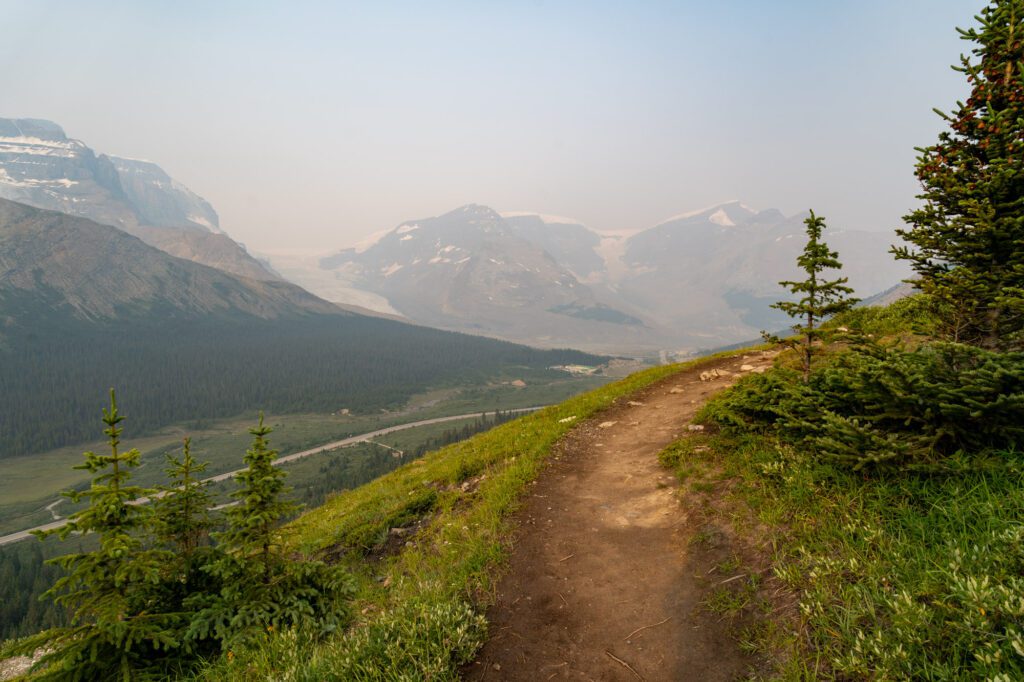
Beyond the views, one of the most exciting aspects of the Wilcox Pass hike is the opportunity to see wildlife up close. The open alpine meadows and rocky outcrops are home to a wide range of species, making this hike a favorite among nature lovers and wildlife photographers.
The most iconic animal you’re likely to see is the bighorn sheep. These majestic creatures often graze near the trail or rest on nearby cliffs. They are typically calm around humans, but it’s important to observe from a distance and never attempt to feed or approach them.
Other wildlife commonly seen on the trail includes:
- Hoary marmots – large ground squirrels known for their whistling alarm calls
- Pikas – small, quick mammals that gather grass for winter
- Golden eagles and ravens – soaring overhead on thermal currents
- Ground squirrels and chipmunks – darting through the rocks
In early summer, the meadows are bursting with wildflowers like glacier lilies, mountain avens, and moss campion. The biodiversity is remarkable and showcases the resilience of life in a harsh alpine environment.
Since this is also grizzly and black bear territory, always hike with bear spray, make noise on the trail, and stay aware of your surroundings. It’s rare to encounter bears on this well-trafficked route, especially in daylight, but caution is always wise.
Best Time to Visit Wilcox Pass
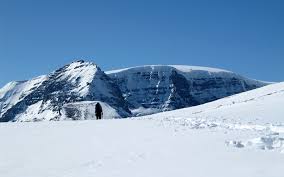
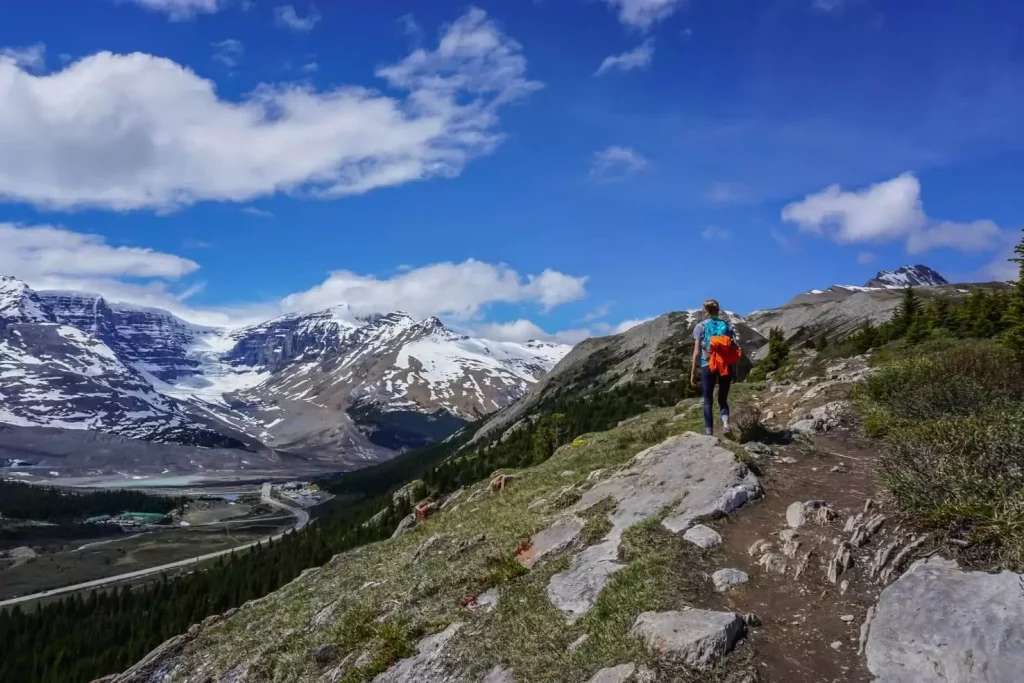
The best time to hike Wilcox Pass is between late June and early October, when the snow has melted and the trail is fully accessible. Each season offers a unique experience:
- Late June to July: Snow is gone, wildflowers bloom, and wildlife is most active. This is the most colorful time to hike.
- August: Warm temperatures and longer daylight hours make this a great time for families and less experienced hikers.
- September to early October: Fewer crowds, cooler temperatures, and golden fall colors make this an ideal time for photographers.
Avoid hiking during early spring or late fall, as snow can cover the trail, making it slippery or dangerous without the proper equipment. The higher elevation also means weather can change quickly—even in summer. Always check trail reports on the Parks Canada website before heading out, and pack layers for sun, rain, wind, or sudden cold fronts.
Pro Tips for Hiking Wilcox Pass
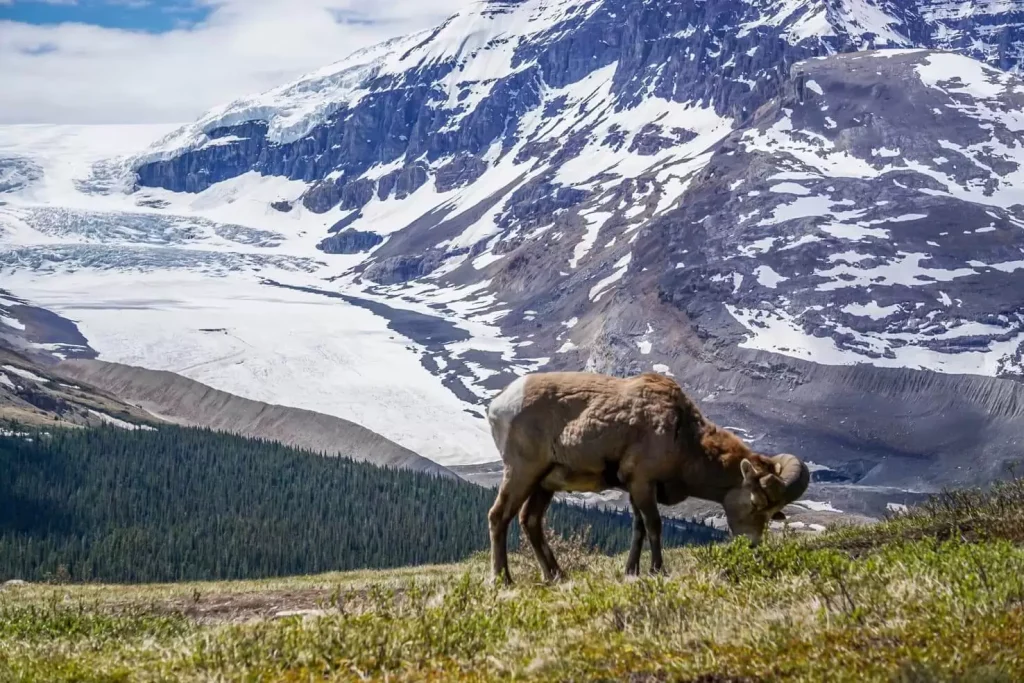
To make the most of your hike, follow these practical tips:
Start Early
Morning hikes offer the best lighting, quieter trails, and more chances to see wildlife. Parking can also fill up by mid-day during peak season.
Wear Proper Footwear
Though the trail isn’t overly technical, it does have rocky sections. Wear sturdy hiking boots with good grip and ankle support.
Bring Plenty of Water
There’s no water source on the trail, so bring at least 1–2 liters per person. The high elevation can dehydrate you faster than expected.
Dress in Layers
Mountain weather is unpredictable. Dress in moisture-wicking layers and pack a windbreaker or rain jacket.
Carry Bear Spray
Even if you don’t see bears, it’s essential to have bear spray and know how to use it. Travel in groups and make noise as you hike.
Don’t Miss the Red Chairs
The Parks Canada red chairs offer one of the best photo ops on the hike. They appear early on the trail and frame the glacier beautifully.
Nearby Attractions to Explore
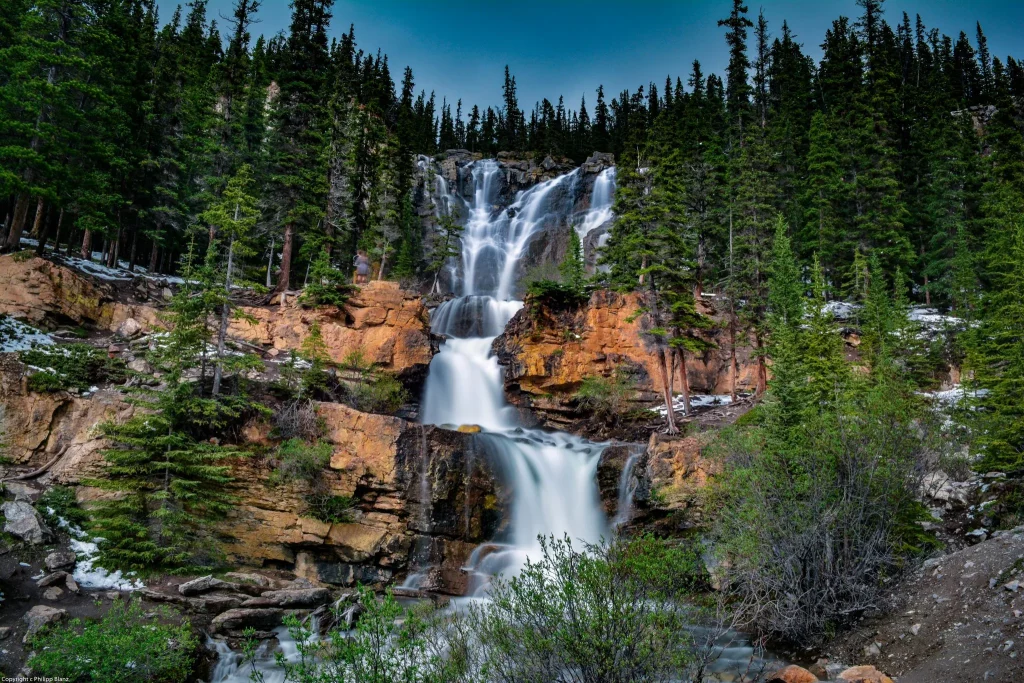
Wilcox Pass is conveniently located near other must-see destinations on the Icefields Parkway, so it’s easy to combine your hike with a full day of exploration. Highlights include:
- Athabasca Glacier: Take a guided walk or ride a snow coach onto the glacier itself. Tours operate daily from the Icefield Discovery Centre.
- Columbia Icefield Skywalk: A glass-floored platform that extends over a deep canyon, offering dramatic views and adrenaline-inducing thrills.
- Tangle Creek Falls: A stunning multi-tiered waterfall right off the highway—perfect for a quick photo stop.
- Parker Ridge Trail: A steeper, slightly more challenging hike that gives stunning views of the Saskatchewan Glacier.
These sites are all within a short drive from the Wilcox Pass trailhead, making them perfect add-ons to your day of adventure.
Final Thoughts: Is Wilcox Pass Worth It?
Absolutely. The Wilcox Pass hike is one of the top trails in Jasper National Park—a perfect blend of natural beauty, wildlife, and glacier views without requiring expert-level hiking skills. Whether you’re an experienced trekker, casual nature lover, or traveling with family, Wilcox Pass is accessible and unforgettable.
The trail rewards hikers with some of the best panoramic views in the Rockies, all within a few short hours. With its stunning alpine setting, regular wildlife sightings, and close proximity to the Columbia Icefield, it’s no wonder that Wilcox Pass continues to rise in popularity.
So lace up your hiking boots, pack your bear spray, and set out for one of the most incredible alpine hikes Canada has to offer. Your adventure awaits at Wilcox Pass.
